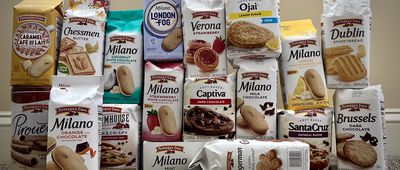The Best Furnace Brands
A lot of factors go into buying a new furnace, but it's still important to be as brand-savvy as possible before you start contacting contractors (and trust us, you need a contractor). To compile this overview of the most common furnace brands, we evaluated information from a number of sites, including Consumer Reports, the U.S. Department of Energy, SmarterHouse (the website of the American Council for an Energy-Efficient Economy), HomeAdvisor, Angie's List, and a host of blogs and forums run by HVAC professionals from across the country. Our picks are the top-recommended brands based on performance and durability.
Our Top Pick


Rheem/Ruud Review
Best Value Furnace Brands
Locate a Rheem or Ruud dealer near you.
Est. Prices: Starting around $1,100 for Rheem; $1,185 for Ruud
Rheem Manufacturing Company makes Rheem and Ruud branded furnaces. Both of these brands strike the sweet spot between price and durability, landing in the middle of the price pack and ranking highly in Consumer Reports' latest customer satisfaction survey of more than 21,000 subscribers; Ruud, specifically, takes a top spot for reliability there. Because they're virtually identical, Rheem and Ruud furnaces share interchangeable parts, so if repairs are needed and a Rheem part can't be found, a Ruud part is a ready substitute, and vice versa. All Rheem furnaces come with a 10-year parts warranty; Ruud furnaces have a 5-year parts warranty. Both brands offer coverage on the heat exchanger that ranges from 20 years to a lifetime warranty, depending on the model. Note that, in some areas, only one or the other of these brands is available.

Goodman/Amana/Daikin Review
Best Brands for a Cheap Furnace
Locate a Goodman, Amana, or Daikin dealer near you.
Est. Prices: Starting around $700 for Goodman; $900 for Amana; $935 for Daikin
Here's a little secret we learned from reading through multiple HVAC contractor blogs: All furnaces are basically identical, so buying a cheap one (especially if it has a decent warranty), isn't going to make much difference in efficiency. Goodman, a division of Daikin Industries Ltd., which also manufacturers Daikin and Amana furnaces, is a brand that's recommended by a number of HVAC experts and known for its low-cost offerings and wide range of available models. Goodman's failure rate was on the higher end in Consumer Reports' customer satisfaction survey, however, and so was Amana's (Daikin was not included in the survey). The warranties should offer some peace of mind: Goodman and Amana furnaces come with a 10-year warranty on parts and a lifetime warranty on the heat exchanger. Daikin has a 10- to 12-year parts warranty and a 20-year to lifetime warranty on the heat exchanger, depending on the model.

Day & Night/Bryant/Carrier Review
Cheap to Mid-Priced Furnace Brands
Locate a Day & Night, Bryant, or Carrier dealer near you.
Est. Prices: Starting around $850 for Day & Night; $980 for Bryant; $1,164 for Carrier
You may have never have heard of Day & Night, but Bryant and Carrier are well-known brands in the furnace world. All three of these furnace lines are made by United Technologies Corporation (UTC) and are virtually identical, with interchangeable parts — good news, because if you own a Day & Night furnace and it needs a part, it will be widely available. Carrier is the priciest of the three sibling brands, but the HVAC blogs we consulted say the price bump is just based on the Carrier name, not on any particular upgrades. While there's not much information on Day & Night's durability, Carrier and Bryant get decent reliability reviews, so buyers can probably expect Day & Night to perform similarly. Day & Night furnaces carry a 10-year parts warranty as well as a 1- to 10-year (depending upon the model) "No Hassle Replacement" warranty on "major components." A Day & Night dealer can supply more model-specific details. Bryant also offers a 10-year parts warranty and varying, model-specific warranties on the heat exchanger that generally cover either 20 years or the life of the furnace — be sure to consult the installer or the manufacturer's website for exact terms. Carrier offers a 10-year warranty on parts and a 20-year to lifetime warranty on the heat exchanger, depending upon the model. As with the others in this roundup, availability of these brands depends on location.

Trane/American Standard Review
Mid- to High-Priced Furnace Brands
Locate a Trane or American Standard dealer near you.
Est. Prices: Starting around $1,275 for Trane; $1,350 for American Standard
There's little difference between Trane and American Standard furnaces: They're both made by Trane and share the same design and build characteristics; both get good reviews for reliability; and they cost about the same. Most of the HVAC blogs we consulted have nothing particularly bad to say about either of these companies, but most agree that the average consumer simply doesn't need to spend so much on a furnace. (Both brands fall toward the bottom of the recommendation lists on a couple of the HVAC blogs we consulted, due to their high prices.) Still, if name recognition is important to you — and that is a factor for some — then Trane is a good, mostly mid-priced choice. The brand is also known for its CleanEffects air cleaning system, which can be paired with its furnaces. Its high-efficiency, low-pressure-drop filtering is geared toward allergy and asthma suffers and said to be more effective than even HEPA room filters — but, of course, this add-on comes at a premium, costing about $1,200 installed. The warranties on Trane and American Standard furnaces range from one to 10 years on parts (depending on whether the product is registered) and 20 years to lifetime on the heat exchanger. Both of these brands are widely available — another plus in a pinch.

York/Lennox Review
Think Twice Before Buying
Locate a York or Lennox dealer near you.
Est. Prices: Starting around $780 for York; $1,410 for Lennox
York and Lennox are at the very bottom (York) and very top (Lennox) of the furnace price scale. While York's low starting prices may appeal, the brand comes in dead last (based on reported failure rates) in Consumer Reports' recent survey ranking 10 gas furnace brands for customer satisfaction. And upscale Lennox doesn't rank much higher than its cheaper competitor. To be fair, Goodman and Amana furnaces appear in this lower bracket too, but with their budget prices and robust warranties (more comprehensive than York and equal to Lennox), those brands are probably a better bet. York offers a 5- to 10-year warranty on the heat exchanger and a 10-year warranty on parts. Lennox offers a 5- to 10-year warranty on parts and a 20-year to lifetime warranty on the heat exchanger, depending upon the model.



















